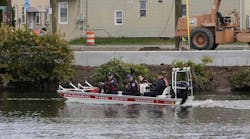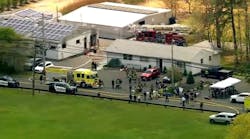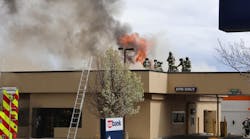June 06--MOUNT VERNON -- Emergency responders on Wednesday told the Mount Vernon City Council all of the things that went right on May 23, when a span of the Skagit River Bridge collapsed into the river.
Within moments a Burlington police officer called the Skagit 911 center and relayed the disaster. And the operator, with no alarm in her voice, alerted all agencies on both sides of the river.
Hearing the calls, seeing the pages, made many do a double take.
"Most people listening to that thought this was a drill," said Mount Vernon Fire Chief Roy Hari.
Hari and others gave the council a behind-the-scenes look at emergency responses during the collapse during a study session.
State transportation officials also updated the council on bridge replacement and repairs.
Dozens of agencies eventually responded with helicopters, hovercrafts, infrared detectors and other high-tech equipment to make sure nobody remained in the frigid Skagit River waters.
Skagit Valley Hospital also activated its emergency phone tree to call in off-duty workers. Tyler Dalton, the hospital's trauma and disaster preparedness coordinator, said 94 people reported for duty, and four trauma teams and three surgical suites were prepared for whatever came through the door.
"We're glad we didn't need to use you," said Mayor Jill Boudreau.
Police Chief Jerry Dodd said just after the collapse, the department had about 30 hours of overtime -- a relatively normal amount.
"What it cost the citizens of Mount Vernon was two rolls of barrier tape," Dodd said. "That's a bargain."
State Department of Transportation officials said they are still tweaking signals and detours. Dina Swires, traffic engineer, said the state is bringing in extra signs to provide more specific direction and to remind drivers not to block intersections, an infraction that carries a $124 fine.
Jay Drye, assistant regional administrator for DOT, said the first section of the temporary bridge could be across the bridge as early as Monday. DOT officials are trying to pinpoint a speed for the spans, which he said is between 35-45 mph. The lanes on the temporary span are also going to be about a foot narrower than the old span at 11 feet wide.
Six companies are qualified to bid on constructing the permanent span, Drye said. The DOT has a goal of making sure the bridge is installed after Labor Day but before Oct. 1. This will allow holiday traffic to use the temporary span, and should prevent construction from stretching into any part of flood season, he said.
Drye said he doesn't know what the new bridge will look like; that's up to the company that wins the bid. But he can "almost certainly" guarantee it won't be a bridge with overhead trusses.
Reporter Kate Martin: 360-416-2145, [email protected], Twitter: @Kate_SVH, facebook.com/ KateReports.
Copyright 2013 - Skagit Valley Herald, Mount Vernon, Wash.







